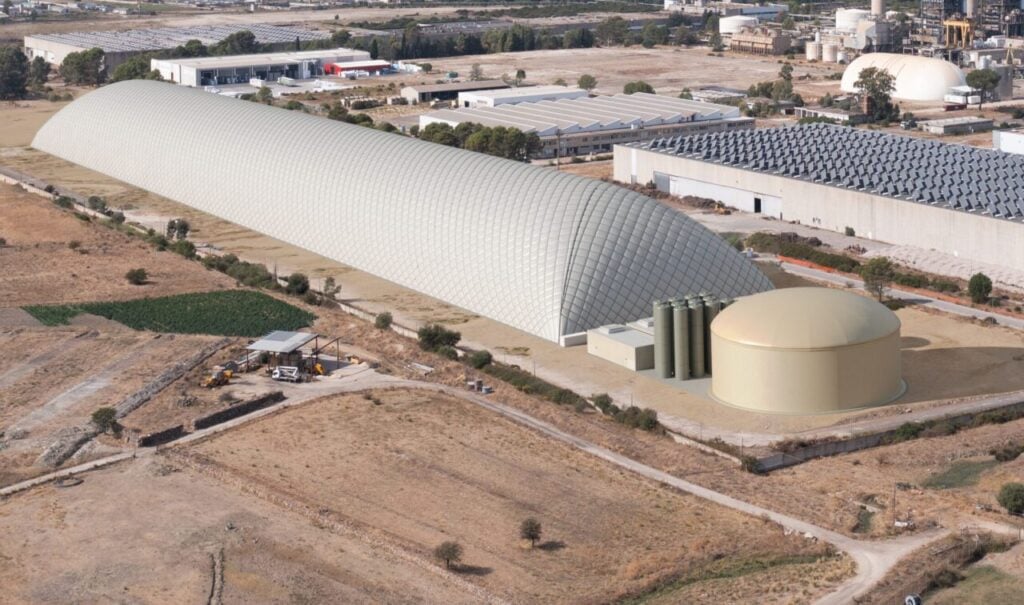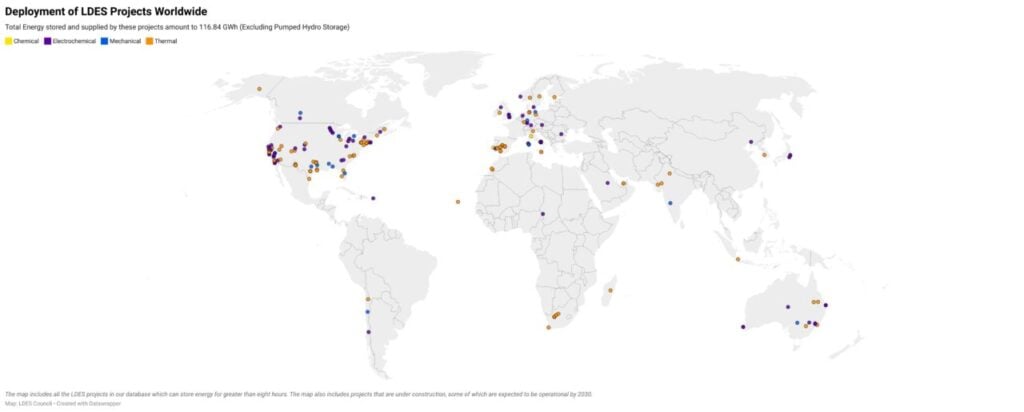
Challenging times demand resilient energy solutions, and, as Long Duration Energy Storage Council (LDES Council) CEO Julia Souder argues, now is the moment for long-duration energy storage to become a key pillar of the energy transition.
This is an extract of a feature article that originally appeared in Vol.43 of PV Tech Power, Solar Media’s quarterly journal covering the solar and storage industries.
Every edition includes ‘Storage & Smart Power’, a dedicated section contributed by the Energy-Storage.news team, and full access to upcoming issues as well as the 10-year back catalogue is included as part of a subscription to Energy-Storage.news Premium.
Flexibility and resilience aren’t optional—they’re essential. We’re in an era of energy complexity: record-high renewable deployment targets, surging demand from artificial intelligence and data centre growth, electrifying industries and increasing threats from climate extremes and geopolitical instability.
Try Premium for just $1
- Full premium access for the first month at only $1
- Converts to an annual rate after 30 days unless cancelled
- Cancel anytime during the trial period
Premium Benefits
- Expert industry analysis and interviews
- Digital access to PV Tech Power journal
- Exclusive event discounts
Or get the full Premium subscription right away
Or continue reading this article for free
In times like these, certain truths become increasingly clear in resilient and reliable energy systems: flexibility is power.
Long-duration energy storage (LDES) is uniquely positioned to deliver both, yet today’s markets, policies, and investment mechanisms still fall short of enabling the scale we need, leaving energy systems at risk of losing critical societal and system-wide benefits. We must move swiftly to:
- Ramp up the LDES marketplace
- Strengthen public-private financing frameworks
- Accelerate supportive policy and regulatory action
New energy demands require new storage thinking at all levels
Even though in the United States, policies are turning away support for renewables, a majority of governments around the world are racing to meet ambitious renewable energy targets – such as the 11TW of renewables by 2030 (IEA and IRENA).
Now, post-COP29 and looking ahead to COP30, long-duration storage is receiving more attention alongside generation—most notably through global storage and grid infrastructure pledges.
Other than pumped hydro storage, most of the new storage currently deployed is short-duration, designed for only minutes to a few hours of flexibility. That’s no longer enough.
We can’t solve today’s challenges with short-duration storage alone
Short-duration energy storage is essential, but insufficient. For both thermal and electric grids, it falls short in these critical areas:
• Limited duration: Can’t support multi-day or seasonal imbalances
• Reduced system resilience: Fails to sustain energy access during extended outages or disruptions
• Narrow applications: Optimised for daily balancing, but not for industrial decarbonisation, grid congestion relief or long-term backup
We need complementary solutions that can store and dispatch energy over days, weeks, and seasons. This is where LDES steps in. LDES unlocks multiple revenue streams, decreases grid congestion, has a cross-sector impact and is a more efficient use of renewable energy.
It’s more than a tool for utilities—it’s a system-wide enabler across industry, transport, buildings and fuels. The more we deploy and integrate these applications, the faster and cheaper our path to net zero becomes.
LDES is not a single technology—it’s a family of solutions, including thermal, mechanical, electrochemical and chemical systems.
What they share is a singular mission: to bridge the gap between variable supply and variable demand, over periods that short-duration batteries alone can’t economically or technically address.
While many think of storage as simply saving electricity for later, LDES goes far beyond. What makes LDES a powerful solution is in how the stored power or heat is ultimately used, with applications often referred to as power-to-power, power-to-heat and power-to-X.
Each pathway expands the role of LDES beyond the grid, unlocking flexibility across sectors.
The real benefits: Beyond renewables
The impact of LDES expands beyond decarbonisation; it enables an affordable, secure and resilient energy system. LDES acts as the shock absorber and stabiliser for energy systems, such as firming renewables, shifting surplus energy, replacing fossil fuel peakers and enhancing grid resilience. And it’s not just theoretical, look at the map of projects in Figures 1 & 2.


Globally, the LDES Council has tracked 360 projects, 43 of which are under construction, with the latest year of completion in 2032. There are hydro projects in LATAM, but not new pumped hydro storage. Focusing on the United States, not only are diverse applications of LDES in construction or being deployed, but also new gigawatt factories.
LDES projects are already proving their worth, delivering value to grids, customers and communities, as many communities need LDES to strengthen their energy infrastructure as well as provide resilience. But this is just a handful of what is needed to scale. More needs to be done.
What’s next?
To fully realise the LDES opportunity, governments, regulators and financial institutions must act on these priorities:
Establish Clear market signals:
• Set long-duration storage targets at national and regional levels
• Ensure procurement mechanisms support duration diversity
• Set a resource adequacy value for LDES 8+ hours
Modernise planning frameworks:
• Include LDES in transmission, distribution, and reliability planning
• Recognise LDES contributions to system resilience, inertia, and heat decarbonisation
Expand financing mechanisms:
• Blend public and private capital, support new revenue stacks
• Support early-stage deployment via loan guarantees, offtake models, and grants
Celebrate and scale success stories:
• Share case studies and best practices (e.g., Spain, Massachusetts, India)
• Build trust with communities, utilities and investors
Streamline permitting and build public trust
• Simplify permitting for low-impact LDES projects
• Remove excess grid fees
• Engage local communities early
• Embed LDES in just transition and workforce development plans
Let’s not miss this opportunity
LDES is an infrastructure necessity. The next five years are decisive. Regulatory inertia must give way to bold action because the crisis warrants action. Most importantly, the tools and talent exist.
With the right policies, financing and deployment urgency, we can scale LDES technologies in time to deliver resilience, affordability and climate security. Without it, the clean energy transition risks faltering under its own ambition.
The energy transition we are in is a once-in-a-century transformation. Missing this opportunity to scale long-duration energy storage, we risk higher costs, greater emissions and a less resilient grid and energy system, unable to meet the demands of a decarbonised world. But if we succeed, LDES becomes the quiet force that makes the transition work, delivering resilience, affordability and true climate security.
Reaching the necessary amount of LDES by 2030 is a critical step to the much-needed energy system inflexion – and we have reached the horizon where fossil fuels are no longer needed for energy system security. We cannot afford to wait. The time to build the LDES marketplace isn’t someday—it’s now. Let’s move with the speed this moment demands, before the window closes and, with it, the future we still have the power to shape.
About the Author
Julia Souder is CEO of the Long Duration Energy Storage Council (LDES Council), an executive-led global nonprofit organisation with more than 60 members operating in 20 countries. She is a strategic executive with over 20 years of experience as a coalition builder in the energy and environmental sectors.
